Sea Glass Home - Sea Glass Colors - Brown Sea Glass
Brown Sea Glass
Brown Sea Glass - What is brown sea or beach glass?
Is it rare? Where does it come from?
The origin, color varieties, and value of brown sea glass of course vary.
Here we will talk about brown glass as it relates to what we find on the beach.
Especially true of sea glass, "a picture is worth a thousand words."
So along with interesting information about brown glass and bottles that sea glass comes from we will include photos.
Beer Bottle Browns...and More
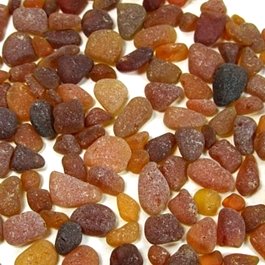 Gorgeous Colors of Brown Sea Glass
Gorgeous Colors of Brown Sea GlassWhen you find a piece of brown sea glass, you can be pretty sure it came from a beer bottle.
Not 100% sure, but with the immense popularity and production of beer over the centuries and the use of brown glass of different shades for beer bottles, the vast majority of brown sea glass comes from beer bottles.
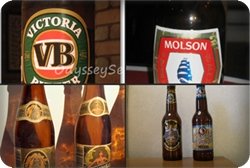
The other uses, of course, would include medicine bottles, bleach bottles, other chemical containers, dishware, and a few other less common sources.
Why is beer almost always associated with brown glass?
Here's a little background.
Bottled beer has been in use since as
early as the 16th century. Beer bottles come in various sizes, shapes
and colors. Dark glass prevents light from spoiling the beer.
However, lighter colored bottles are often used for marketing reasons.
Here you see a group of brown shards. Brown sea glass comes in many shades or hues, from palest amber or straw colored to very dark reddish-brown.
When it's really frosted, sometimes it's very hard to tell what the color is and doesn't have a very attractive appearance.
Put the same brown pieces in a little water, as in this photo, and the colors really come out.
For that reason, you might want to rub a few drops of a light oil such as rosemary or another herbal oil on the surface of your dark brown pieces.
The oil can be removed easily with a little dish detergent.
Why Brown Glass?
The main reason beer has been and still is made in brown bottles of
varying shades is to protect it from light exposure.
The other uses, of course, would include medicine bottles and few
others.
Lightstruck beer or skunked beer is beer that has been exposed to
ultraviolet and visible light. This exposure causes a reaction with the
hops (which are added to beer to achieve the right amount of
bitterness).
However, when exposed to ultraviolet rays, the reaction with the hops
produces a compound that is very similar to a skunk's natural defenses!
In some cases, such as Miller High Life, a hop extract that is
nonreactive is used to bitter the beer so it cannot be "lightstruck."
Why brown and not another common color?
Bottles with dark brown glass give some protection to the beer, but
green and clear glass offer virtually no protection at all.

All in all, even though brown is such a basic color, finding a honey-brown or golden-amber, a reddish-brown or gray-brown nicely-tumbled piece of sea glass is always worth a comment to your seaglassin' buddy and an addition to your collection baggie!
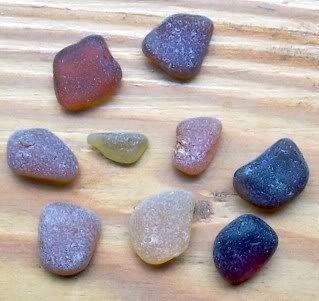
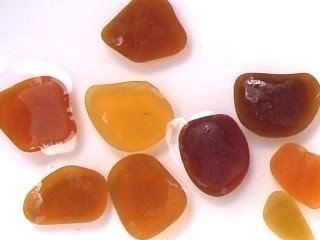
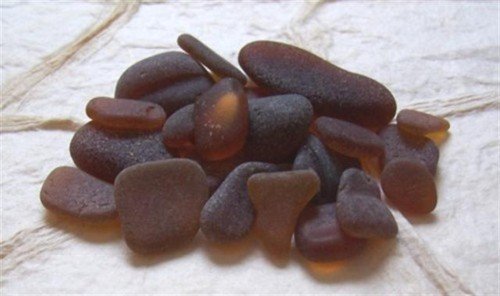
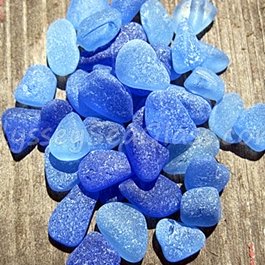
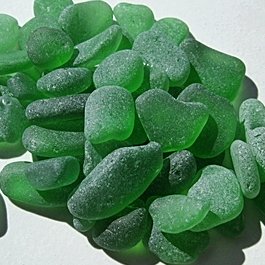
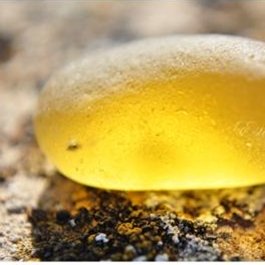
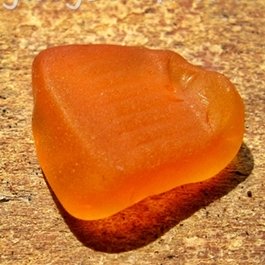
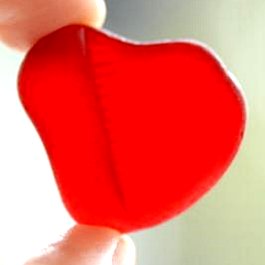
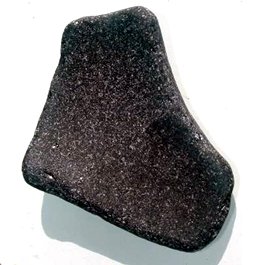
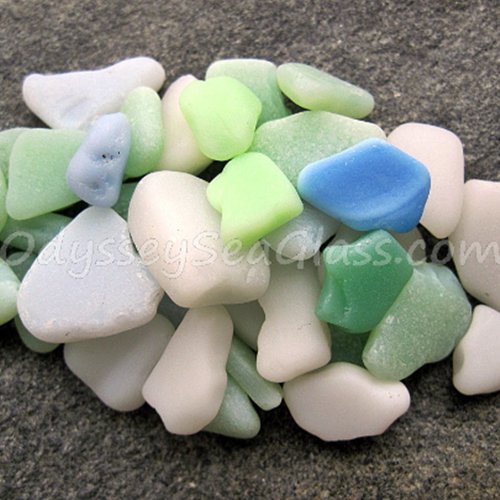







Comments!
We love receiving your comments, but please read the notes below before posting. Thank you!NOTES:
All comments are moderated. If you leave the page you won't see your comment until it is approved.
Select the "Post to Facebook" check box to be notified on FB when a reply has been posted.
If you scan the previous comments you may find an answer to your question. Click the "View X more" link at the bottom (if visible) to see all comments.
Photos - If you would like to include a photo, please use our Photo Forums.
Questions - If you have a question, it may already be answered. Please tap or click here to search of our site first.